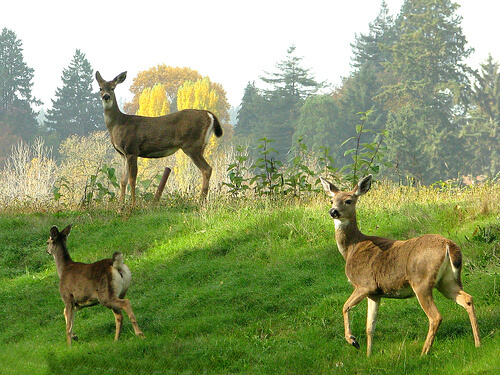
No matter how environmentally conscious we strive to be, no one relishes the idea of their lovingly raised produce winding up in the bellies of deer, rabbits, groundhogs, moles, voles and other animals. “Whether your garden is a large backyard plot, a medium-sized raised bed or some simple containers on your balcony or deck, foraging wildlife will be happy to visit and dine there – unless you take steps to urge them to go elsewhere,” says James J. Messina of Messina Wildlife Management.
Yet environmental awareness is an essential element of good gardening – and one of the reasons why you decided to grow your own fruits and vegetables. You care about what goes into the environment, so your pest control efforts need to be effective but environmentally friendly. So messy, dangerous chemicals that may put your family, pets and the environment at risk are out for you.
“There are a number of non-chemical ways to protect your produce from pests, including traps and fencing,” Messina says. “Most are labor-intensive, often ineffective and do little to prevent new pests from moving in once the current ones move on. To effectively drive off resident pests and deter new ones, an organic pest repellent can be as effective – if not more so – than traditional chemical repellents, and will be kinder to the animals and environment, too.”
The most effective organic pest repellents are those that target the very reasons wildlife love home-grown produce and flowers – taste and smell. Most animals judge the quality of a food source based on taste and smell. Some organic pest repellents, like the 100 percent organic, OMRI-certified products from Messina Wildlife Management, make your produce and flowers taste and smell bad to potential pests, yet are inoffensive to and safe for humans.
What’s more, the products won’t harm animals, but will simply convince them to look elsewhere for food based on instinctive taste and scent aversion. They won’t wash off in the rain and only need to be reapplied every 30 days to remain effective. Visit www.messinawildlife.com to learn more.
To get the most out of your organic pest repellents, it’s important to correctly identify what type of pests might visit your garden. “Ideally, you should start using products like Deer Stopper deer repellent or Groundhog Stopper before the pests start munching on your produce and flowers,” Messina says. “But it may not always be easy to know what to spray for before it shows up, and it’s not always easy to identify who’s dining in your garden once the foraging begins.”
Messina offers some tips for recognizing what animal is causing damage to your garden and landscape:
Deer – A single deer can eat about 12 pounds of foliage in a single day. Examine half-eaten plants closely. If the bite marks have a jagged, rough edge they were likely made by deer, whose lack of incisors mean they have to tear at food sources.
Rabbits – Bunnies will eat vegetables and even damage woody landscape plants. Rabbit damage is usually no higher than 2 1/2 feet above the ground, with sharp cuts at 45-degree angles on plants.
Groundhogs – These burrowers can move a lot of dirt in your backyard. Look for burrow holes with mounds of dirt nearby, and vegetation eaten off at ground level. You may also see gnawing or claw marks on woody vegetation.
“You can protect your produce and the environment at the same time,” Messina says. “Simply choose organic products that use the animals’ own instincts against them, and you can avoid sharing the fruits of your gardening labor with critters – without compromising your environmental conscience.”


